 |
Flow Charts and Internal Control Questionnaires |
| << Benefits of Internal Control to the entity |
| Construction of an ICQ >> |
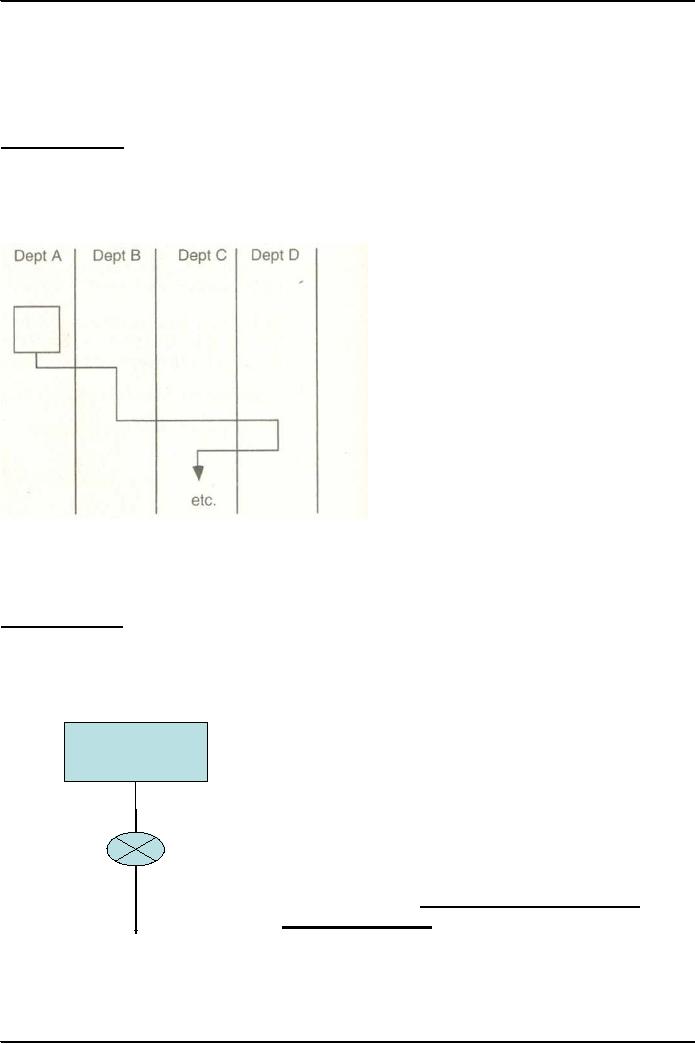
Fundamentals
of Auditing ACC 311
VU
Lesson
18
EVALUATING
THE INTERNAL CONTROL SYSTEM
Flow
Charts and Internal Control
Questionnaires:
Use
of the major symbols in flow
charts
The
Document symbol
Each
document in the flowchart should have a vertical
flow-line. Such vertical flow-lines
represent a
movement in time
within a particular department. When the
document is moved to another
department, this
movement in position will be represented
by a horizontal line; departments
are
therefore listed
across the page.
Here
the document is originated in Dept
A. It is moved to
Dept B, then Dept D and
then Dept C. Note
that only vertical and
horizontal lines are
used, never
diagonal lines.
The
Operation symbol
Various
operations will be performed on a
document.
It
will, for instance: be
prepared, added up, used to
prepare other documents,
etc.
Any
operation, other than a
check function, is represented by the
cross symbol.
Each
operation symbol should be supported by a
brief narrative explaining the nature of
the operation.
Invoice
Kamran
totals the invoice
Note that
the operation symbol is
positioned on a
vertical
flow-line. It should never
appear on a
horizontal
flow-line since that would
suggest in this
case that
Kamran totals the invoice
while it is
etc.
moving
from one department to
another.
63
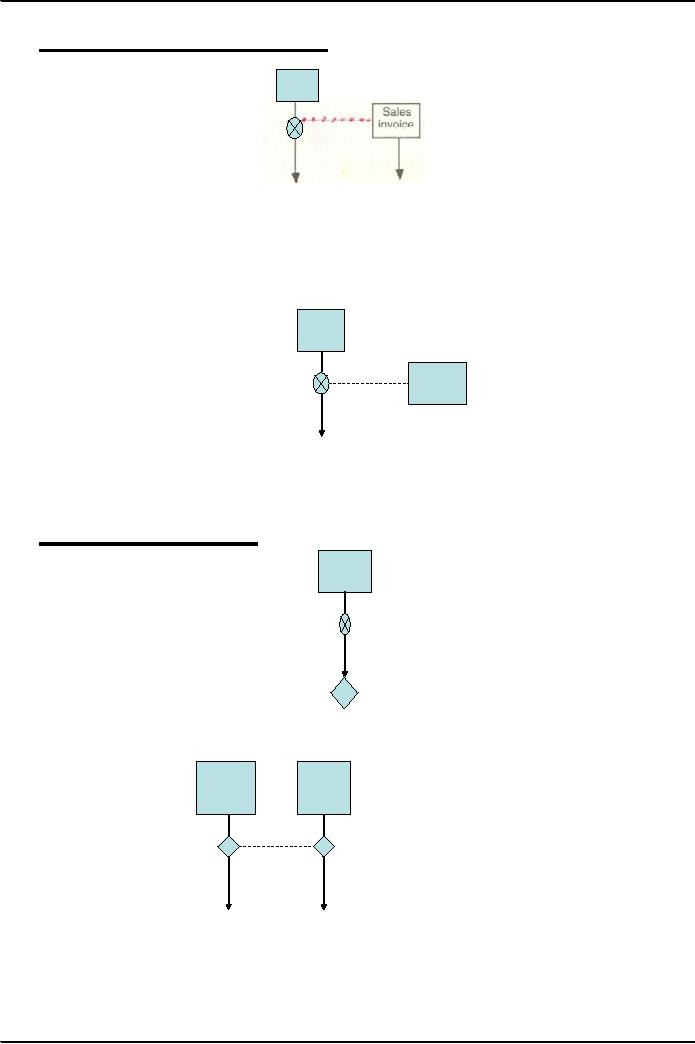
Fundamentals
of Auditing ACC 311
VU
The
Information flow
symbol
Here one
document is
prepared
from
Sales
another.
order
The
movement of
Fauzia
prepares an invoice
information to
the
from the
sales order
sales
invoice is shown
by a dotted
line.
Such
information
flow-lines
are always
horizontal,
never
vertical.
Note that
flow-lines
then
continue for both
the order
and the
invoice.
This
example is wrong
because:
Sales
(a) no
narrative exists to
explain
order
the nature
of the operation;
(b) the
sales invoice has no
Sales
flow-line, it
disappears into
Invoice
thin
air.
The Check
symbol
Sales
Invoice
Sattar
totals the invoice
This
example
shows a
simple
check on a
single
Wajid
checks the totals
document.
This shows
a check
between
two
Delivery
Sales
documents.
Note
Invoice
Note the
use of the
Pasha
checks that all
information
flow-line
goods
dispatched have
again and
that both the
been
invoiced.
delivery
note and the
sales
invoice continue
with
vertical flow-lines
of their
own.
64
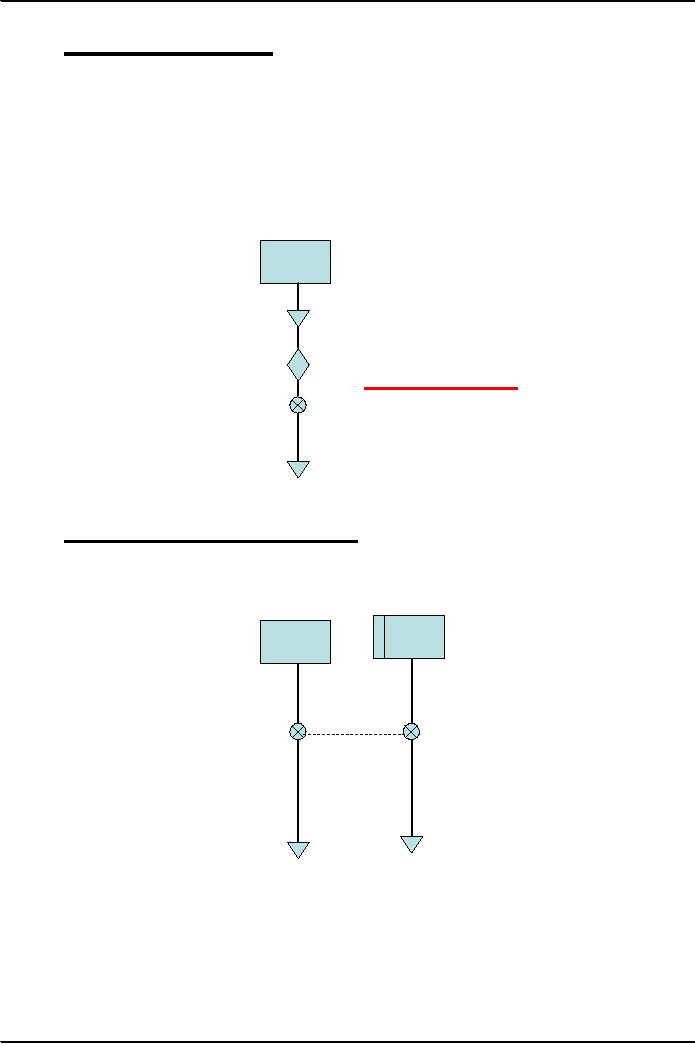
Fundamentals
of Auditing ACC 311
VU
The
filing symbol
Once
documents have been
processed they will often be
filed away.
Such files
are either permanent or
temporary.
The two
sorts of file are denoted by
the same symbol but
the
temporary
files are marked with a
letter `T'.
It will
often be useful to indicate
the order of filing either
numerically,
alphabetically
or in
chronological
order.
This can be done by
marking
the symbol with the
letter N, A, or D.
Purchase
Note that
with the temporary
Order
filing
symbol the
flow-line of the
document
must continue.
Filed
awaiting delivery of
goods.
TN
With the
permanent
filing symbol
the
flow-line stops since
the
Checked by
Zahoor
document
has reached its
(weekly) got late
delivery
ultimate
destination
When goods
are received
purchase
order initialed by
Safdar
N
The
book of account
symbol
The
flowchart should use the
book symbol to show the
book which
is
already in
existence. It should
also show the book
being re-filed once
the
posting is
completed.
Sales
Sales
Daybook
Invoice
Sohail
posts invoices to the
SDB
D
Note that
the same
flow-line principles apply to
books as to documents. A vertical
flow-
line is
needed which ends with
the re-filing of the sales
day book which will be
kept
chronologically.
65
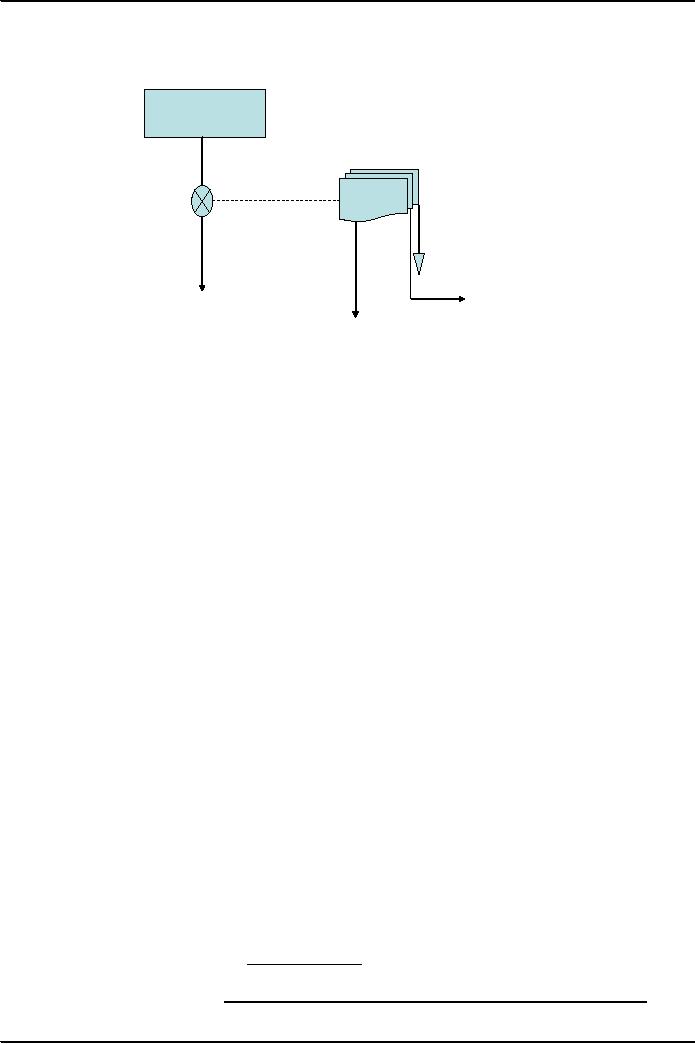
Fundamentals
of Auditing ACC 311
VU
Depicting
multi-part sets of documents
Requisition
Note
Purchase
Rauf
prepares
purchase
order sets
order
N
To
supplier
Note that
each part of the set
must have a flow-line
emanating from it. In
this
example;
PO1 is sent to the supplier,
PO2 goes off to another
department and PO3
is filed
numerically
Preliminary
Evaluation of the System
Having
ascertained,
confirmed and recorded the
system, the auditor now
needs to carry out a
preliminary
evaluation of the
system in order to make a
decision as to whether he will:
� Rely
on internal controls and adopt a
systems audit approach,
or,
� Perform
extensive substantive testing. Using a
verification approach to the
audit.
Internal
Control Questionnaire
Features:
� Used
in large company
audit
� Used
to place reliance on internal
controls
� Used
to design audit
approach
Definition:
An ICQ
is a formal and usually
standardized document which
comprises:
1. A
list of internal controls in existence
and
2.
Highlights any
weaknesses.
Objectives:
(i)
To ascertain
a clients
systems of accounting and
internal control
(ii)
To evaluate
the
control system thus
recorded, and hence
(iii)
To identify
those
controls which indicate strengths in the
system upon which the
auditor
will
seek to place reliance,
and
(iv)
To identify
those
areas over which there
are weak or no controls and
which therefore
must
be subjected to more extensive
substantive testing and
reported by inclusion in the
Management
Letter.
Construction of an
ICQ
I)
It is
good practice when designing
ICQs to state, as a brief
introduction:
i. A
list of control objectives
which each sub-system under consideration
should
seek
to achieve
ii.
Any business considerations
specific to the enterprise under review
which
should be taken
into account.
66
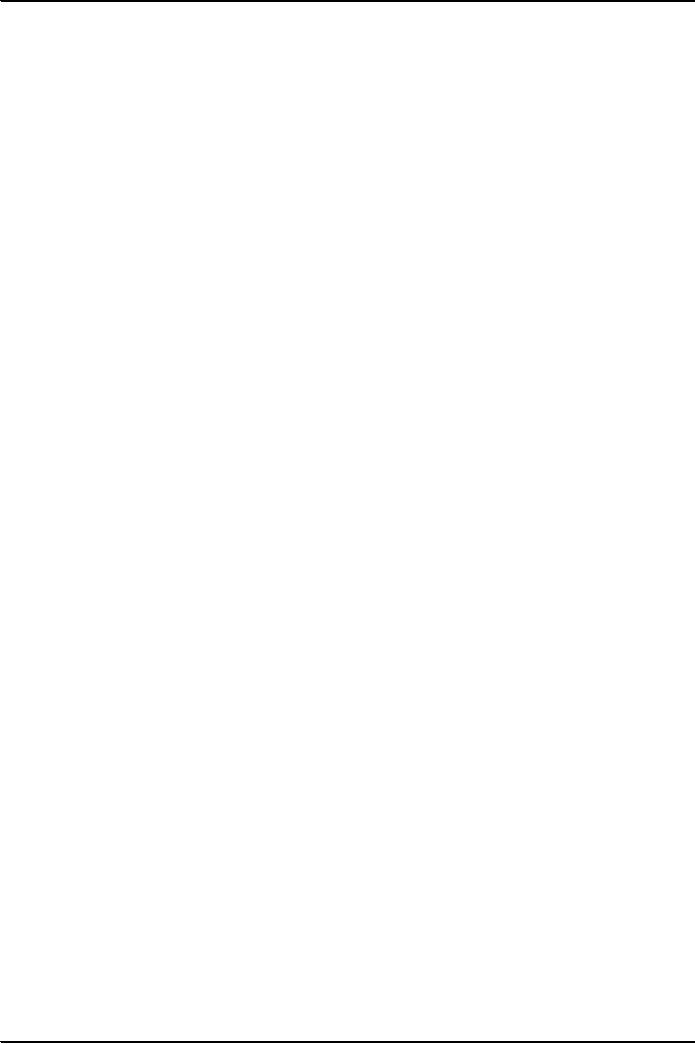
Fundamentals
of Auditing ACC 311
VU
The
reason for this is essentially to
highlight for the audit staff
key areas for their
consideration to the audit
staff.
II)
The questions in an ICQ should be
designed to ascertain whether the control
objectives are being
achieved
and should therefore cover such
aspects as:
a.
Instructions given to staff in the performance
of their duties
b.
Authorization procedures
c.
Documents and procedures
used to originate transactions
d.
Recording procedures
e.
Sequence of procedures
f.
Custody procedures
g.
Relative independence of the persons
involved at each
stage
of a
transaction (i.e. segregation of
duties).
III)
The questions should be framed
such that a Yes/No answer is
given, with a No answer
usually
indicating
a control weakness.
IV) An
ICQ should carry such basic
information as:
(a)
The name of the document
(ICQ)
(b) the
system to which it relates
(e.g. purchasing
cycle)
(c)
the client to whom it
relates
(d) the
accounting period under review
(e)
evidence of who has prepared
and reviewed the document
(f)
the provision of columns
for:
- Yes
and No answers
-
comments where neither Yes
or No are applicable
-
indicating the significance or otherwise
of apparent weaknesses
-
references to audit
programs
-
references to Management
Letters.
67
Table of Contents:
- AN INTRODUCTION
- AUDITORS’ REPORT
- Advantages and Disadvantages of Auditing
- OBJECTIVE AND GENERAL PRINCIPLES GOVERNING AN AUDIT OF FINANCIAL STATEMENTS
- What is Reasonable Assurance
- LEGAL CONSIDERATION REGARDING AUDITING
- Appointment, Duties, Rights and Liabilities of Auditor
- LIABILITIES OF AN AUDITOR
- BOOKS OF ACCOUNT & FINANCIAL STATEMENTS
- Contents of Balance Sheet
- ENTITY AND ITS ENVIRONMENT AND ASSESSING THE RISKS OF MATERIAL MISSTATEMENT
- Business Operations
- Risk Assessment Procedures & Sources of Information
- Measurement and Review of the Entity’s Financial Performance
- Definition & Components of Internal Control
- Auditing ASSIGNMENT
- Benefits of Internal Control to the entity
- Flow Charts and Internal Control Questionnaires
- Construction of an ICQ
- Audit evidence through Audit Procedures
- SUBSTANTIVE PROCEDURES
- Concept of Audit Evidence
- SUFFICIENT APPROPRIATE AUDIT EVIDENCE AND TESTING THE SALES SYSTEM
- Control Procedures over Sales and Debtors
- Control Procedures over Purchases and Payables
- TESTING THE PURCHASES SYSTEM
- TESTING THE PAYROLL SYSTEM
- TESTING THE CASH SYSTEM
- Controls over Banking of Receipts
- Control Procedures over Inventory
- TESTING THE NON-CURRENT ASSETS
- VERIFICATION APPROACH OF AUDIT
- VERIFICATION OF ASSETS
- LETTER OF REPRESENTATION VERIFICATION OF LIABILITIES
- VERIFICATION OF EQUITY
- VERIFICATION OF BANK BALANCES
- VERIFICATION OF STOCK-IN-TRADE AND STORE & SPARES
- AUDIT SAMPLING
- STATISTICAL SAMPLING
- CONSIDERING THE WORK OF INTERNAL AUDITING
- AUDIT PLANNING
- PLANNING AN AUDIT OF FINANCIAL STATEMENTS
- Audits of Small Entities
- AUDITOR’S REPORT ON A COMPLETE SET OF GENERAL PURPOSE FINANCIALSTATEMENTS
- MODIFIED AUDITOR’S REPORT